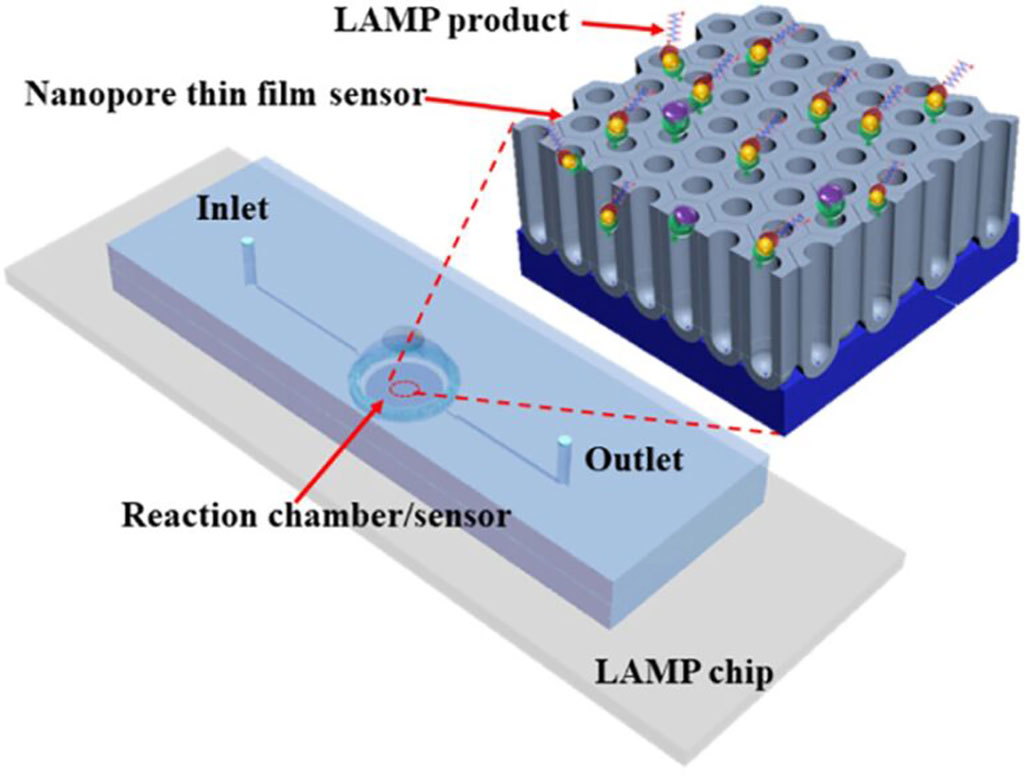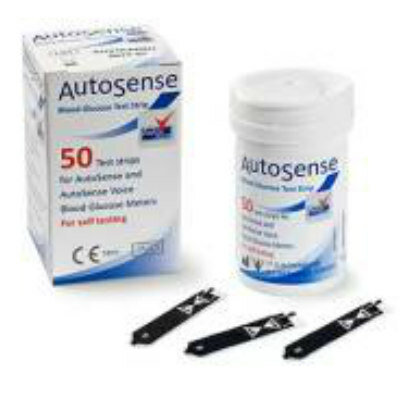New Sensor Chip Shows Promise for Rapid, Low-Cost POC Disease Diagnostics
|
By LabMedica International staff writers Posted on 27 Jun 2023 |

The Loop-Mediated Isothermal Amplification (LAMP) technique is a popular method for identifying pathogens by amplifying their DNA. The detection of LAMP-amplified products, such as the DNA of pathogens, typically requires the use of fluorescent dyes to "label" these products, which can be expensive and have low sensitivity. Now, researchers have designed a new sensor capable of diagnosing pathogens without the need for these reagents and with a high degree of sensitivity. This new development also eliminates the time-consuming process of DNA purification, which often poses challenges for point-of-care applications.
Scientists at Texas A&M AgriLife Research (College Station, TX, USA) in collaboration with Iowa State University (Ames, IA, USA) have developed a sensor chip capable of identifying numerous disease-causing pathogens with ten times the sensitivity of existing techniques. The sensor chip eliminates the need for chemical dye reagents typically employed in diagnostics. The innovative chip consists of a nanopore thin-film sensor housed within a unique reaction chamber. Uniquely designed primers are immobilized on the nanofilm, causing the amplified LAMP products to bind to the sensor. The resulting signals can then be directly and easily measured using a portable spectrometer. The sensor delivers results within approximately 30 minutes. This new technology holds the promise of rapid, inexpensive point-of-care diagnostics in various sectors, including plants, food, animals, and human health, including the detection of foodborne pathogens, bird flu, and COVID-19.
In their study, the researchers used the innovative sensor to identify Phytophthora infestans, a pathogen that causes the highly destructive late blight disease, posing a significant threat to potato and tomato crops worldwide. The LAMP chip offers a new portable platform for pathogen detection, employing label-free sensors with exceptional sensitivity. The research team will now focus on increasing its sensitivity to the subattomolar levels or even lower. They aim to overcome the existing challenges in identifying and differentiating pathogen species and strains that share high sequence similarities. The team also plans to improve detection specificity and implement quantitative detection by integrating artificial intelligence and CRISPR gene-editing technologies. Their goal is to develop a feasible product for wide-ranging use in plant, animal, and human health point-of-care applications.
“This research advances technologies that have emerged as some of our greatest opportunities for improving agriculture, food safety and human health,” said Junqi Song, Ph.D., associate professor and plant immunity research lead with AgriLife Research. “Our publication represents a step toward realizing these powerful tools against diseases.”
Related Links:
Texas A&M AgriLife Research
Iowa State University
Latest Technology News
- Cell-Sorting Device Uses Electromagnetic Levitation to Precisely Direct Cell Movement

- Embedded GPU Platform Enables Rapid Blood Profiling for POC Diagnostics
- Viral Biosensor Test Simultaneously Detects Hepatitis and HIV
- Acoustofluidic Device to Transform Point-Of-Care sEV-Based Diagnostics
- AI Algorithm Assesses Progressive Decline in Kidney Function
- Taste-Based Influenza Test Could Replace Nasal Swabs with Chewing Gum
- 3D Micro-Printed Sensors to Advance On-Chip Biosensing for Early Disease Detection
- Hybrid Pipette Combines Manual Control with Fast Electronic Aliquoting
- Coral-Inspired Capsule Samples Hidden Bacteria from Small Intestine
- Rapid Diagnostic Technology Utilizes Breath Samples to Detect Lower Respiratory Tract Infections
Channels
Clinical Chemistry
view channel
VOCs Show Promise for Early Multi-Cancer Detection
Early cancer detection is critical to improving survival rates, but most current screening methods focus on individual cancer types and often involve invasive procedures. This makes it difficult to identify... Read more
Portable Raman Spectroscopy Offers Cost-Effective Kidney Disease Diagnosis at POC
Kidney disease is typically diagnosed through blood or urine tests, often when patients present with symptoms such as blood in urine, shortness of breath, or weight loss. While these tests are common,... Read moreHematology
view channel
ADLM’s New Coagulation Testing Guidance to Improve Care for Patients on Blood Thinners
Direct oral anticoagulants (DOACs) are one of the most common types of blood thinners. Patients take them to prevent a host of complications that could arise from blood clotting, including stroke, deep... Read more
Viscoelastic Testing Could Improve Treatment of Maternal Hemorrhage
Postpartum hemorrhage, severe bleeding after childbirth, remains one of the leading causes of maternal mortality worldwide, yet many of these deaths are preventable. Standard care can be hindered by delays... Read more
Pioneering Model Measures Radiation Exposure in Blood for Precise Cancer Treatments
Scientists have long focused on protecting organs near tumors during radiotherapy, but blood — a vital, circulating tissue — has largely been excluded from dose calculations. Each blood cell passing through... Read moreImmunology
view channel
Blood-Based Liquid Biopsy Model Analyzes Immunotherapy Effectiveness
Immunotherapy has revolutionized cancer care by harnessing the immune system to fight tumors, yet predicting who will benefit remains a major challenge. Many patients undergo costly and taxing treatment... Read more
Signature Genes Predict T-Cell Expansion in Cancer Immunotherapy
Modern cancer immunotherapies rely on the ability of CD8⁺ T cells to rapidly multiply within tumors, generating the immune force needed to eliminate cancer cells. However, the biological triggers behind... Read moreMicrobiology
view channel
High-Throughput Enteric Panels Detect Multiple GI Bacterial Infections from Single Stool Swab Sample
Gastrointestinal (GI) infections are among the most common causes of illness worldwide, leading to over 1.7 million deaths annually and placing a heavy burden on healthcare systems. Conventional diagnostic... Read more
Fast Noninvasive Bedside Test Uses Sugar Fingerprint to Detect Fungal Infections
Candida bloodstream infections are a growing global health threat, causing an estimated 6 million cases and 3.8 million deaths annually. Hospitals are particularly vulnerable, as weakened patients after... Read morePathology
view channel
New Molecular Analysis Tool to Improve Disease Diagnosis
Accurately distinguishing between similar biomolecules such as proteins is vital for biomedical research and diagnostics, yet existing analytical tools often fail to detect subtle structural or compositional... Read more
Tears Offer Noninvasive Alternative for Diagnosing Neurodegenerative Diseases
Diagnosing and monitoring eye and neurodegenerative diseases often requires invasive procedures to access ocular fluids. Ocular fluids like aqueous humor and vitreous humor contain valuable molecular information... Read moreTechnology
view channel
Cell-Sorting Device Uses Electromagnetic Levitation to Precisely Direct Cell Movement
Sorting different cell types—such as cancerous versus healthy or live versus dead cells—is a critical task in biology and medicine. However, conventional methods often require labeling, chemical exposure,... Read more
Embedded GPU Platform Enables Rapid Blood Profiling for POC Diagnostics
Blood tests remain a cornerstone of medical diagnostics, but traditional imaging and analysis methods can be slow, costly, and reliant on dyes or contrast agents. Now, scientists have developed a real-time,... Read moreIndustry
view channel
Qiagen Acquires Single-Cell Omics Firm Parse Biosciences
QIAGEN (Venlo, Netherlands) has entered into a definitive agreement to fully acquire Parse Biosciences (Seattle, WA, USA), a provider of scalable, instrument-free solutions for single-cell research.... Read more
Puritan Medical Products Showcasing Innovation at AMP2025 in Boston
Puritan Medical Products (Guilford, ME, USA), the world’s most trusted manufacturer of swabs and specimen collection devices, is set to exhibit at AMP2025 in Boston, Massachusetts, from November 11–15.... Read more
Advanced Instruments Merged Under Nova Biomedical Name
Advanced Instruments (Norwood, MA, USA) and Nova Biomedical (Waltham, MA, USA) are now officially doing business under a single, unified brand. This transformation is expected to deliver greater value... Read more






















